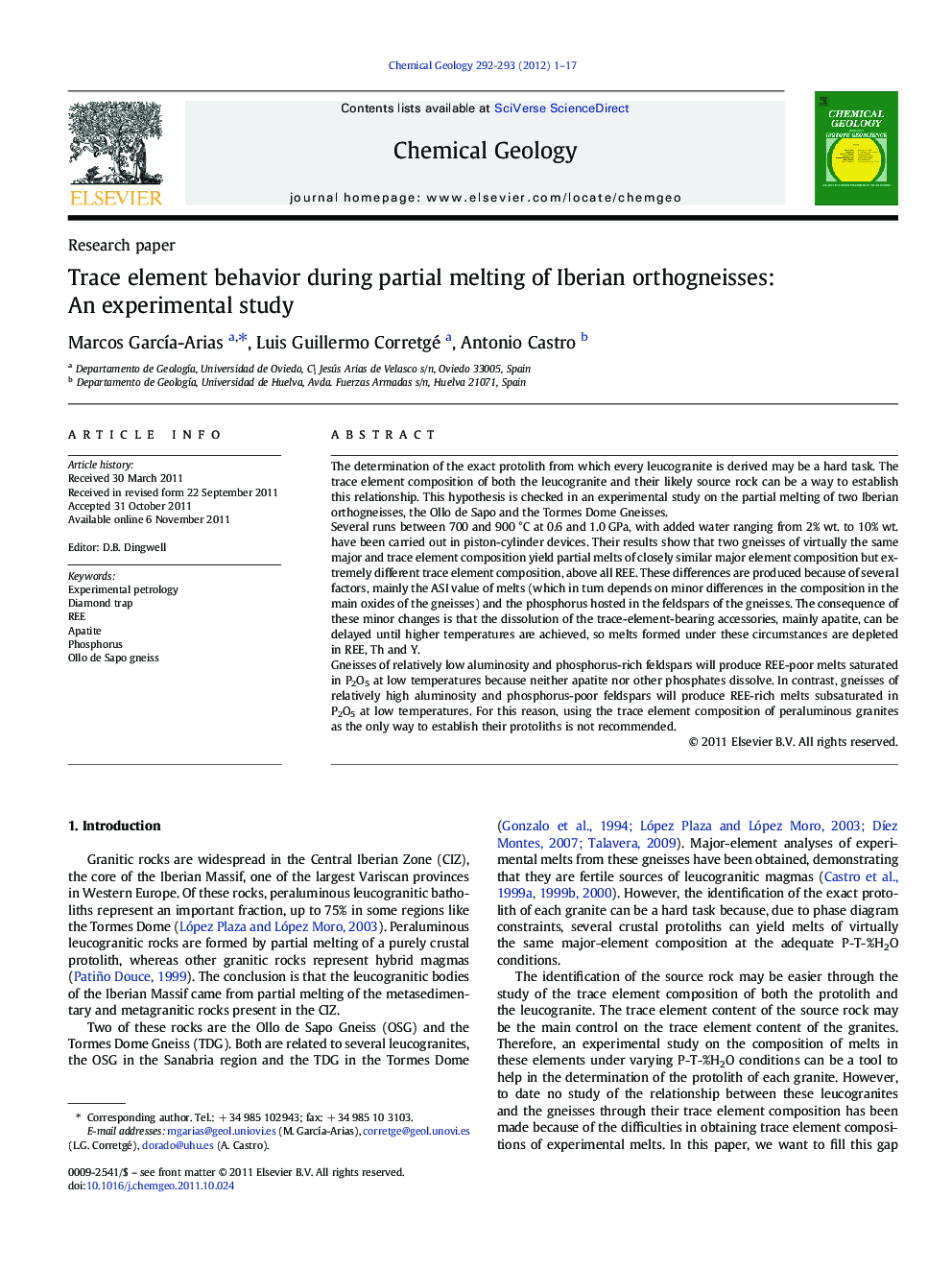| کد مقاله | کد نشریه | سال انتشار | مقاله انگلیسی | نسخه تمام متن |
|---|---|---|---|---|
| 4699548 | 1637654 | 2012 | 17 صفحه PDF | دانلود رایگان |

The determination of the exact protolith from which every leucogranite is derived may be a hard task. The trace element composition of both the leucogranite and their likely source rock can be a way to establish this relationship. This hypothesis is checked in an experimental study on the partial melting of two Iberian orthogneisses, the Ollo de Sapo and the Tormes Dome Gneisses.Several runs between 700 and 900 °C at 0.6 and 1.0 GPa, with added water ranging from 2% wt. to 10% wt. have been carried out in piston-cylinder devices. Their results show that two gneisses of virtually the same major and trace element composition yield partial melts of closely similar major element composition but extremely different trace element composition, above all REE. These differences are produced because of several factors, mainly the ASI value of melts (which in turn depends on minor differences in the composition in the main oxides of the gneisses) and the phosphorus hosted in the feldspars of the gneisses. The consequence of these minor changes is that the dissolution of the trace-element-bearing accessories, mainly apatite, can be delayed until higher temperatures are achieved, so melts formed under these circumstances are depleted in REE, Th and Y.Gneisses of relatively low aluminosity and phosphorus-rich feldspars will produce REE-poor melts saturated in P2O5 at low temperatures because neither apatite nor other phosphates dissolve. In contrast, gneisses of relatively high aluminosity and phosphorus-poor feldspars will produce REE-rich melts subsaturated in P2O5 at low temperatures. For this reason, using the trace element composition of peraluminous granites as the only way to establish their protoliths is not recommended.
► Comparison of trace element composition of experimental melts of two Iberian gneisses.
► Melts at the same P-T-H2O conditions may differ strongly depending on the protolith.
► The cause of the difference in trace elements is the saturation of melt in phosphorus.
► Phosphorus in feldspars and ASI of the rocks influences dissolution of accessories.
► Protoliths of leucogranites cannot be found studying their trace element composition.
Journal: Chemical Geology - Volumes 292–293, 23 January 2012, Pages 1–17